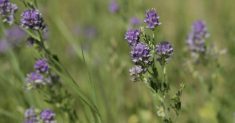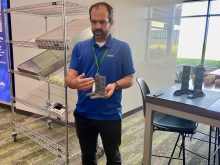The U.S. National Sunflower Association has these tips for farmers on the Northern Plains hoping to overcome a late spring and cash in with a good crop of sunnies.
Sunflower is one of the last crops that can be planted in the northern region. Once established, the crop grows quickly. Common strategies agronomists and farmers have for working with late-planted sunflower include:
Switch to an early-maturing hybrid.
Open or blackean the soil to speed up emergence.
Plant shallow, but into moisture, for faster emergence.
Read Also

Manitoba sclerotinia picture mixed for 2025
Variations in weather and crop development in this year’s Manitoba canola fields make blanket sclerotinia outlooks hard to pin down
Reduce some of the inputs to lower crop production costs.
Plant slightly higher populations for quicker drydown.
Minimize use of “stay green” hybrids to escape late-season drydown issues.
Minimize use of “plant health” fungicides to avoid late-season drydown issues.
Consider using a desiccant to aid drydown if it can be applied in time to be effective.
At today’s prices the extra effort is well worth it.
Delayed planting and tight stocks have pushed sunflower prices to an all-time high. The bird food market and crushing plants are offering the old-crop price of oil-type sunflower at just shy of $40 cwt in a number of locations, an association release says.
New-crop prices have hit the $30 mark in some areas. This is not likely to change much during the summer months. Last year’s prices hovered around $15 cwt.
The plant’s large tap root reaches deep into the soil, which makes it a master at soaking up subsoil moisture and nutrients. It’s been known to help dry out fields, but also to thrive during dry spells.


















